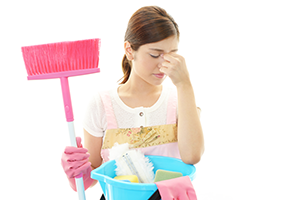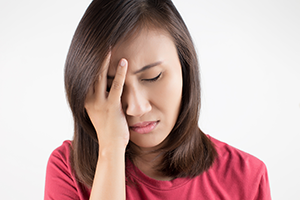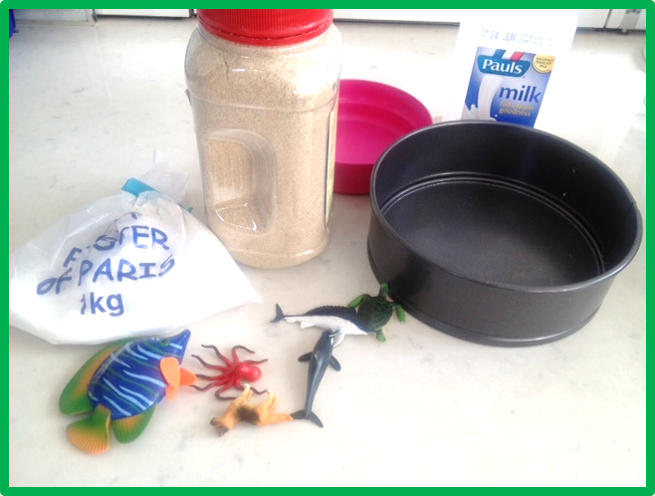


Many people attempt to take on a mold removal project themselves in order to save money. This is fine if you’re dealing with a very small, localized problem. However, most mold problems are not that simple. They occur as a result of an ongoing issue—usually a moisture problem.
Mold abatement is, therefore, a systematic process that requires you to first identify and fix the source of the moisture; then clean up the mold. If you try to remove mold yourself, you risk making things much worse, not only for your home, but for your health as well. Chances are that you haven’t set up proper containment, you’re not wearing the proper safety gear, you haven’t found the source of the mold problem, you don’t have the right mold removal equipment, and you don’t know how to dispose of contaminated materials properly.With our tools and expertise, T&T Moldstoppers Mold Control technicians provide fast, safe and effective mold abatement.
When materials and surfaces become wet and are not dried immediately, mold can begin to form in as little as 24-48 hours. After that, mold exposure can occur in primarily three ways: • Inhalation of mold spores or mycotoxins • Direct skin contact • Ingestion (which, in most cases, is accidental)
Mold requires only three things to grow: moisture (e.g. leaking pipes, condensation, flooding); the right temperature; and a food source (e.g. drywall, wood, wallpaper or any cellulose-rich material). Anywhere you have all three requirements, you have ideal conditions for mold growth. Given that this is the case for most spots in your home, it’s easy to see why it’s such a common and widespread problem.
Anyone, including an entirely healthy individual, can be negatively affected by mold. However, some people are more likely to experience negative or more pronounced health effects (trouble breathing, nausea, headaches, skin rashes, etc.). Ultimately, your degree of sensitivity and extent of exposure will determine how affected you are. Certain population groups are more sensitive and at greater risk of mold exposure than others, including the following: • Infants • The elderly • People with a weakened or compromised immune system
Black mold, scientifically known as Stachybotrys, is a highly toxic species of mold that, despite its name, can vary in colour from green to black. Black mold often grows on water-damaged materials that have a high cellulose content, such as drywall, wood, carpets, grout, wallpaper and cardboard. Exposure to black mold, especially over extended periods of time, has been linked to a wide variety of health problems including respiratory infections, asthma and allergies, headaches, chronic fatigue and even nervous system disorders.
Most people automatically assume they have a black mold problem as soon as they see black spots on their walls. However, even though black spots are a common sign of mold, they may also be caused by a variety of things such as dust and dirt, insects, smoke, and soot. Typically, a mold problem will be accompanied by other signs such as a musty odour, water stains, high humidity, and cracked or bubbling paint. The only way to know for sure if you’re dealing with toxic black mold is to conduct a mold test. While this can be done using several sampling methods (tape/swab/bulk), the most accurate way to do so, by far, is with air quality testing and air sampling.
At T&T, a typical mold inspection includes a visual examination of the affected areas, air quality testing (upon client’s request), and the measurement of various conditions such as temperature and relative humidity (RH). During this time, the inspector will look for potential causes of the mold growth, namely by locating sources of excess moisture. At the end of the inspection, you will receive a detailed report of the inspector’s findings, including any testing results as well as a professional recommendation.
While it’s great to know where mold most often grows, it’s better to understand why in order to prevent it. Let’s dive deeper and explore the reasons why the basement, for instance, is a problem area. There are three main reasons why mold so often grows in the basement: 1. Basements are not as well ventilated as the upper floors of a house and are, therefore, more humid. 2. Basement walls are cooler, allowing warm air to condense on them in the summer. 3. Basement floors rarely have a moisture barrier or proper insulation. With neither a moisture barrier nor proper insulation installed, the moisture from the underlying soil migrates upward.
The quality of our air directly impacts our health. And since Canadians spend approximately 90% of their time indoors, it goes without saying that poor indoor air quality can lead to health problems such as respiratory diseases, chronic fatigue, headaches, allergies and asthma as well as an overall decreased quality of life. The good news is that you can find out exactly what’s in your air by getting an indoor air quality test. This type of testing can help you detect common pollutants like mold, asbestos, volatile organic compounds, and radon. And once you have this information, taking an appropriate course of action is much simpler.
For starters, we discussed mold versus mildew stain. Mildew stain is not a living organism and cannot emit harmful airborne toxins. Mold, on the other hand, is a living organism: it requires a food source and propagates. And, perhaps the most important distinction, mold releases harmful airborne particles. We suggested effective household remedy solutions for the mildew stain, such as using pure white vinegar rather than a water-based solution or bleach. If you’re a tenant or property owner and suspect mold, book a mold inspection today.
You can drastically reduce and even eliminate odours inside your home by regularly cleaning the carpets, or, better yet, removing them entirely. If you don’t want to completely remove carpets from your home, keep a close eye on them for any type of water damage, including spills. You should also frequently clean the carpets to eliminate nasty bacteria and dirt, thereby preventing build-up



